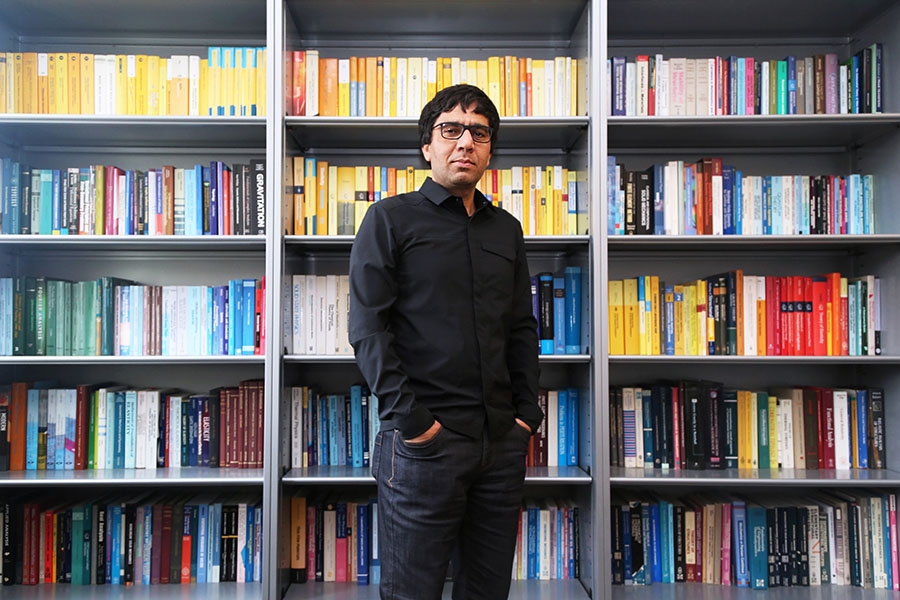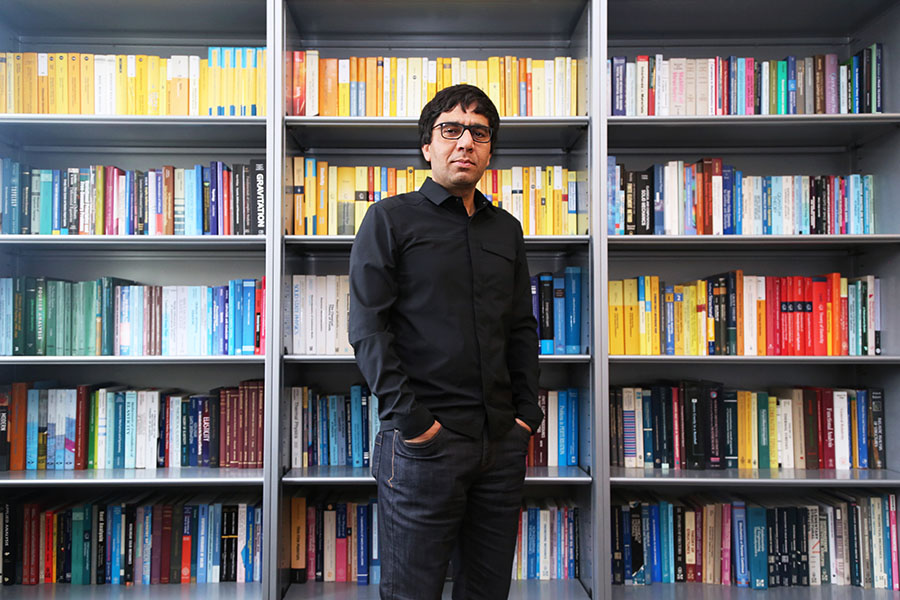
 |
Can you hide a building from a stress wave, like an earthquake or even some kind of blast or explosion?
If that kind of “cloaking” were possible, it could shape how we design critical structures like nuclear power plants.
Arash Yavari has started a new four-year, half-million dollar federally funded project with Ph.D. student Ashkan Golgoon to lay the mathematical foundations for that kind of technology and explore if it’s theoretically possible while still respecting the laws of physics.
“I'm trying to see, if there is hope to realize such a cloak in the world we live in.” said Yavari, a professor in the School of Civil and Environmental Engineering and an expert in geometric mechanics and nonlinear elasticity. “This project, right now, is more than 90 percent, or 95 percent theoretical, but then, it's not about an imaginary problem.”
Here’s how to think of what cloaking could achieve:
Imagine a solid square of land. When you introduce some kind of deformation or strain, engineers understand how the resulting stress wave will travel through the body.
Now imagine a similar square of land with a hole in the middle. That hole changes how the stress wave will travel through the land. Yavari’s project aims to design a cloak so that the stress wave moves through the land with the hole exactly the same way as the solid land with no hole. It would be as though the hole didn’t exist.
If that’s possible, then that hole could instead be a building or other structure that would be protected from the wave moving through the surrounding area. In fact, it wouldn’t interact with the wave at all.
Perhaps that could be achieved with some sort of engineered cloaking material — using what Yavari said are sometimes called “metamaterials” — or maybe it would be a new design or construction technique. Designing the cloak itself comes later. Yavari is working to understand whether it’s possible in the first place.
“We have these two bodies that look very different. One has the response that we want to see. The other one looks very different. I'm trying to design this other object to have exactly the same response, at least outside the cloak,” Yavari said. “But, in this process, I need to understand the governing equations very well — how they are changed under certain geometric transformations — and I need to make sure all the balance laws, the laws of physics, are respected. Otherwise what I'm proposing will not be realized in this world.”
Yavari said it could turn out that full cloaking just isn’t possible, but we might be able to design a material or a technique that offers some partial protection for structures.
“Another goal of our work is to find the mathematical obstructions to cloaking, if there are any,” he said. “If you can understand all those, then maybe you can find a proper approximation for partial cloaking. But you need to clearly understand what those obstructions are.”
The idea of cloaking has been discussed in the scientific literature in the past 10 years or so, but Yavari said many of the studies so far have conceptual flaws.
“There are a lot of numerical simulations in the literature that people are very excited about, but they are not real, in the sense that the balance of angular momentum is violated,” he said. “They're showing you things that cannot happen in this world. One contribution of our work will be to clean the literature a little bit.”
“This is probably one of the examples of a real-world problem that requires a lot of mathematics that you usually would not need,” Yavari said. “It is interesting in the sense that you cannot formulate this problem properly if you don't work in the right framework.”
